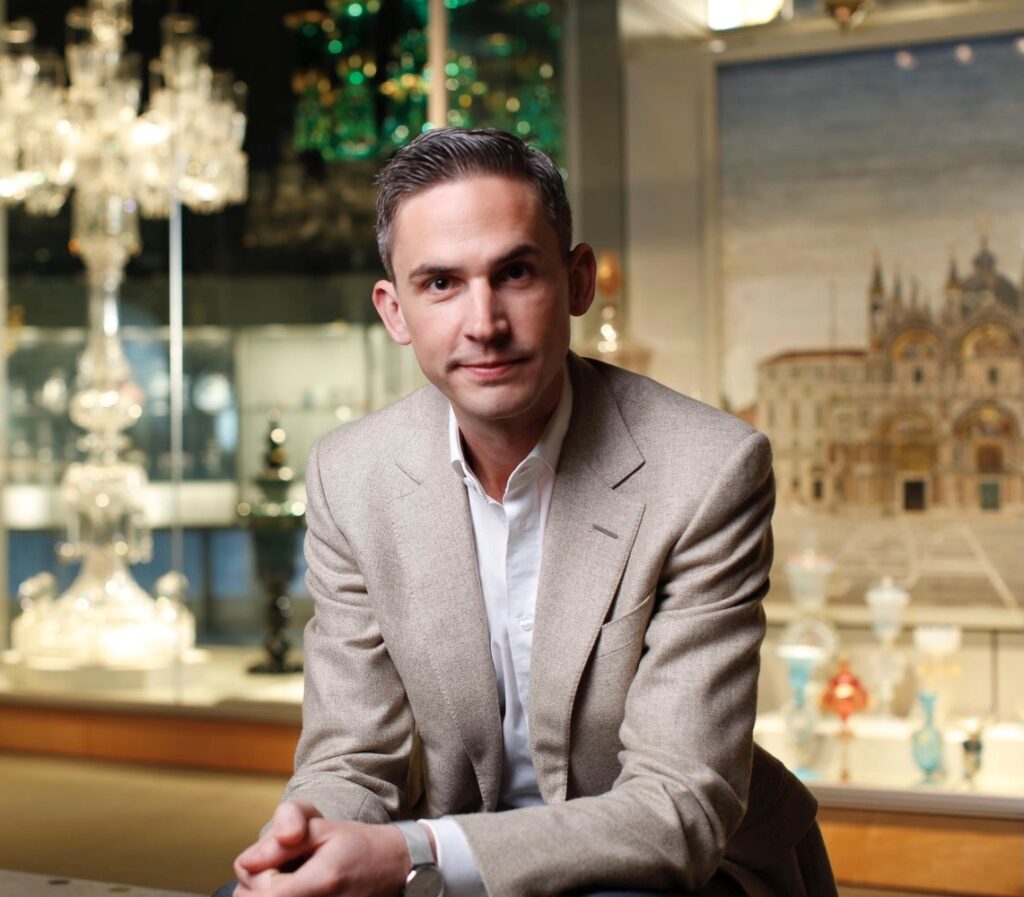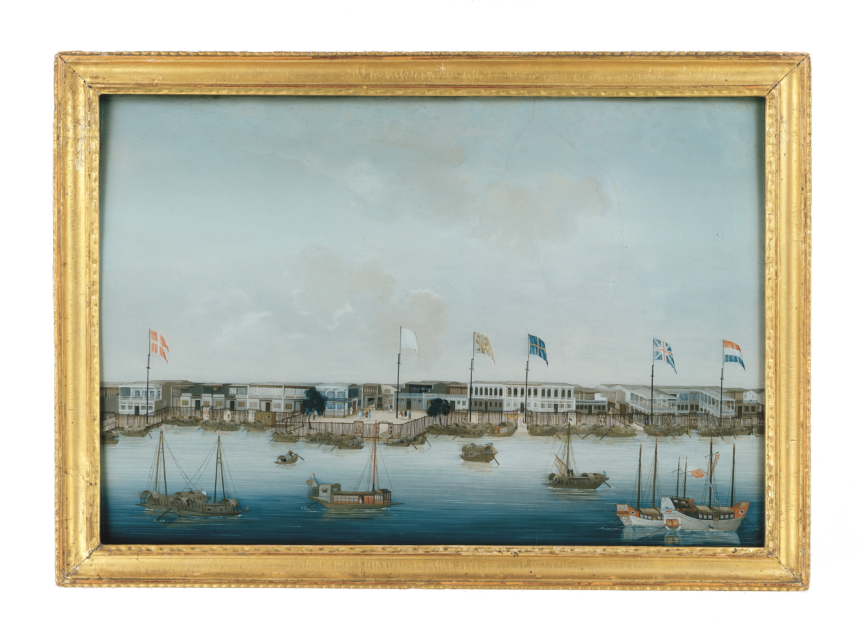
The technique of reverse-painting was introduced to China in the late 1600s by its European trading partners, who manufactured and shipped the plate glass necessary for its production. By the middle of the following century artists specializing in producing images for foreign markets were well-established at China’s primary international port, Guangzhou, or Canton, as well as the capital of Beijing. In this episode, Corning Museum of Glass curator Christopher Maxwell introduces a superlative example of this transnational art. The circa 1784–1785 painting depicts a bullish scene on the Zhujiang River, with junks and sampans crowding the wharf in front of the famous “hongs” (warehouses) flying the flags of Denmark, Sweden, Great Britain, and the Netherlands.

Christopher (Kit) Maxwell is curator of early modern glass at the Corning Museum of Glass in New York. Maxwell graduated with a BA in the History of Art from the University of Cambridge in 2001, and in 2005 he completed his master’s degree in Decorative Arts and Historic Interiors at the University of London. In 2014 he obtained his PhD from the University of Glasgow. Maxwell recently completed a Master in Philosophy in Nazi-era provenance at the University of Glasgow, and is currently pursuing a Master of Research in Caribbean Studies at the University of Warwick. His research has been supported by the Paul Mellon Centre, the Hamilton Estates, the Furniture History Society and the French Porcelain Society. Before joining the Corning Museum of Glass, Kit held curatorial positions at the Victoria and Albert Museum and the Royal Collection Trust.
Christopher Maxwell, curator of early modern glass at the Corning Museum of Glass, New York. Photograph courtesy of the Corning Museum of Glass.

